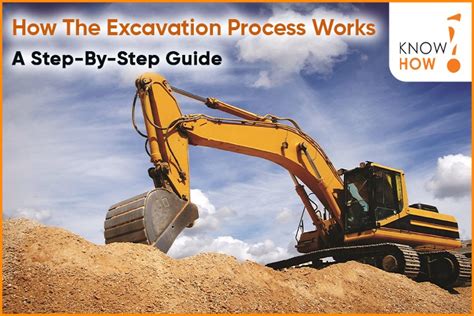excavation and compaction Learn about the general and specific requirements for earthwork operations, such as excavation, blasting, backfill, embankment, and borrow excavation. Find out how to prepare, inspect, and pay for earthwork, and what materials are common borrow materials. Digger Hire | Bristol, Gloucester, Cheltenham | Digger & Driver Hire Service. Many Years Experience. Professional, Insured, Efficient. . Mini Digger | Micro Digger. 4×4 Avant Loader .
0 · soil excavation process
1 · soil excavation and filling
2 · soil excavation and depth
3 · excavation of soil
4 · excavation and refill of soil
5 · excavation and recycling of soil
6 · excavation and backfilling soil
7 · excavation and backfilling
5T Excavator. Ideal For Construction & Demolition. 75-Litre Fuel Tank Capacity. 4180mm Dumping Height. 3890mm Maximum Dig Depth. 1.8mph To 3.1mph Travel Speed. ROPS & .
soil excavation process
Learn the sequence, procedure and quality checks for excavation and backfilling of soil for .Compaction must take place during a fill operation to increase the density of the soil material being placed. Another common breakdown in excavation work is bulk excavation and trench excavation. Swell and shrinkage are two important, and often misunderstood, terms.Learn the sequence, procedure and quality checks for excavation and backfilling of soil for foundation and trench construction. Find out the materials, tools, drawings and safety measures required for earthwork.
Learn how to estimate cubic yards of excavation and backfill, soil types, equipment, testing, compaction, and swell factor. Swell factor is the increase in volume of soil when wet and dry, affecting the amount of backfill needed.
Learn about the general and specific requirements for earthwork operations, such as excavation, blasting, backfill, embankment, and borrow excavation. Find out how to prepare, inspect, and pay for earthwork, and what materials are common borrow materials.
Learn about soil compaction, the method of mechanically increasing the density of soil, and its importance in construction. Find out how to identify and classify different soil types, and the best compaction methods and techniques for each type.A comprehensive guide to excavation and grading techniques for roads, subdivisions, commercial sites, and highways. Learn how to use equipment, plan, stake, grade, compact, and pave with this book. Compaction after excavation is the process of pressing down loosened soil to eliminate air pockets and increase soil density. This ensures that the ground can support structures and prevents future issues like settling, erosion, or water pooling.
Learn about the process, factors, and types of backfilling in foundation construction, and the steps involved in each type. Find out how to choose the appropriate backfill material, ensure proper compaction, and prevent structural issues.
Soil compaction is a crucial process in building construction, ensuring the ground can support the structure’s weight and withstand various environmental factors. Proper soil compaction increases soil density, reduces air pockets, and enhances stability.This manual includes guidelines for braced excavations, excavation stabilization, embankment compaction, underwater fills, cofferdams, uplift resistance, foundation waterproofing and lateral load capacity on deep foundations.
Compaction must take place during a fill operation to increase the density of the soil material being placed. Another common breakdown in excavation work is bulk excavation and trench excavation. Swell and shrinkage are two important, and often misunderstood, terms.Learn the sequence, procedure and quality checks for excavation and backfilling of soil for foundation and trench construction. Find out the materials, tools, drawings and safety measures required for earthwork. Learn how to estimate cubic yards of excavation and backfill, soil types, equipment, testing, compaction, and swell factor. Swell factor is the increase in volume of soil when wet and dry, affecting the amount of backfill needed.Learn about the general and specific requirements for earthwork operations, such as excavation, blasting, backfill, embankment, and borrow excavation. Find out how to prepare, inspect, and pay for earthwork, and what materials are common borrow materials.
Learn about soil compaction, the method of mechanically increasing the density of soil, and its importance in construction. Find out how to identify and classify different soil types, and the best compaction methods and techniques for each type.A comprehensive guide to excavation and grading techniques for roads, subdivisions, commercial sites, and highways. Learn how to use equipment, plan, stake, grade, compact, and pave with this book.

soil excavation and filling
Compaction after excavation is the process of pressing down loosened soil to eliminate air pockets and increase soil density. This ensures that the ground can support structures and prevents future issues like settling, erosion, or water pooling.Learn about the process, factors, and types of backfilling in foundation construction, and the steps involved in each type. Find out how to choose the appropriate backfill material, ensure proper compaction, and prevent structural issues. Soil compaction is a crucial process in building construction, ensuring the ground can support the structure’s weight and withstand various environmental factors. Proper soil compaction increases soil density, reduces air pockets, and enhances stability.

If you need affordable mini digger hire in Blandford Forum , Mammoth Hire can help. We offer some of the best rates nationwide, with a quick delivery service, bringing quality plant equipment right to your home or site.
excavation and compaction|soil excavation and filling